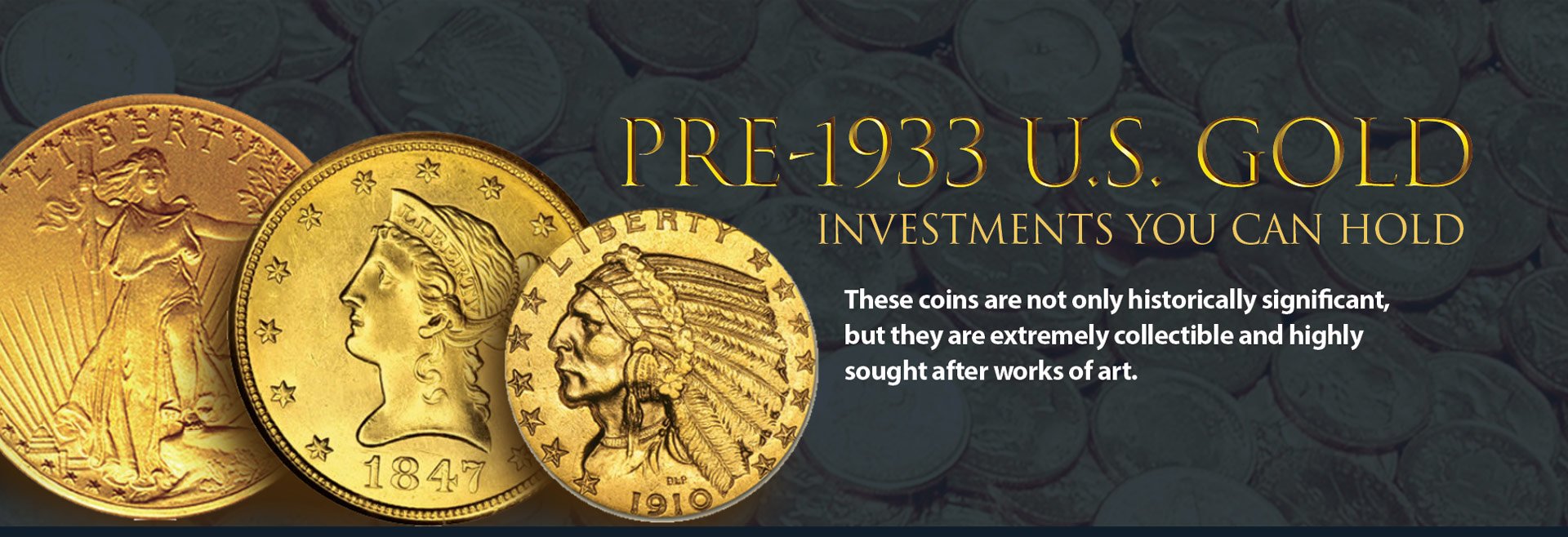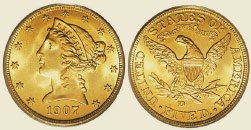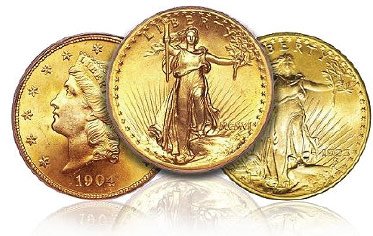The silver dollar has been one of America’s most popular coins throughout its history. As the largest silver coin...
Read MoreSEE LIVE SPOT PRICING 24 HOURS A DAY

The history of pre-1933 US gold coins date all the way back to the end of the 18th century. The Coinage Act of 1792 was the legislation that first sanctioned the production of U.S. coinage. However, production of gold coins really began with the half eagle ($5) and eagle ($10) in 1795. Throughout the early history of the United States, Gold coins served as currency until their confiscation in the early 1930s.


SUBMIT YOUR VALUABLES THROUGH OUR FREE ONLINE APPRAISAL PORTAL

Throughout the years, as the United States expanded, gold coins were struck at 7 different mints ranging from Philadelphia to San Francisco. Below are a few of the most popular Pre-1933 Gold coins Available. Click on the arrow to learn More:

The $20 Liberty double eagle is a highly recognized gold coin. As coins of trade, they were a workhorse in expanding U.S. financial markets in the 19th Century. These historic coins of heft have always been among our favorite portfolio builders.
The classic profile of Miss Liberty is featured on the obverse and the bold heraldic Eagle on the reverse, inspiring symbols of America’s emergence as a mature world power during this exciting period in our nation’s history.

Minted from 1866 to 1907 These classic U.S. gold eagles make an excellent gold portfolio builder. The world-famous profile of Miss Liberty is featured on the obverse and the heraldic American Eagle on the reverse. These are beautiful, heirloom-quality works of art that you can proudly add to your collection.

The $5 Liberty is the only coin in U.S. history to be produced at all seven federal mints. Prior to 1838, all Half Eagles were struck at the Philadelphia Mint. Like the Quarter Eagle, the design, composition, and weight of the Half Eagle changed many times throughout its production. Beginning in 1837 and until the Half Eagle was discontinued in 1929, it was struck from .900-fine gold. In 1908 the Liberty design was replaced with the Indian Head design.



First struck in 1907, the $10 Indian Head was minted through 1933, when the U.S. Government effectively confiscated all gold coins in circulation under President Franklin D. Roosevelt’s Executive Order. Highly regarded sculptor Augustus Saint-Gaudens was commissioned by President Theodore Roosevelt to create the design. The obverse of the $10 Indian Head features a personification of Liberty wearing a traditional Indian head-dress, while the reverse shows an American eagle majestically perched upon a cache of arrows. One noteworthy attribute of the Indian Head eagle gold coin is the stars on the coin’s edge, one for each state in the union (46 from 1907-11, 48 after 1912).
The silver dollar has been one of America’s most popular coins throughout its history. As the largest silver coin...
Read MoreCoin collecting is a hobby with many levels of participation. In fact, there are probably just as many ways to...
Read MoreLarge Cents (1793-1857) Large cents as they are known as by numismatic collectors today have earned a significant place...
Read More